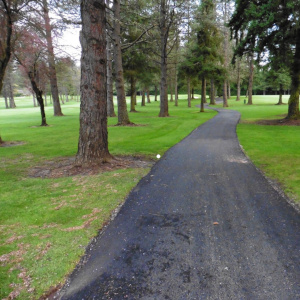October 2025
Rules of Golf: Relief from cart path (abnormal course condition/immovable obstruction) – Rule 16.
If you are faced with this situation (as I was, recently), what are your options for relief from the cart path (specifically), but immovable obstructions generally. The diagram to the right shows the official illustration of the situation with an added circle to indicate the ‘tree’ (or other obstruction – not classified as immovable) within the relief area. The illustration is for a right-handed golfer. Left-handers should view the diagram in a mirror.
- **Relief from Cart Path:**
- – When your ball is on a cart path, which is an immovable obstruction, you are entitled to free relief.
- – Determine the nearest point of complete relief, which is the spot where you can stand and swing without interference from the cart path.
- – From that point, establish a relief area that is one club-length away, not closer to the hole.
- **Determining Nearest Point:**
- – The nearest point of relief is based solely on removing interference from the cart path, not considering obstacles like trees.
- – If the ball lies in the middle of the path, determine the side with the closest point that offers complete relief.
- **Tree or Obstacle Within Relief Area:**
- – If a tree is within your relief area, you must still drop in that area.
- – If you do not have a satisfactory play due to the tree, you can declare your ball unplayable, take appropriate relief (Rule 19), incurring a one-stroke penalty, and play on.
April 2025
Rules of Golf: identifying your ball
As a player, you are always responsible for playing the correct ball at all times, so it’s good practice to put an identification mark on your ball to make it easier to identify that it is indeed your ball (Rule 6.3a). While it isn’t compulsory under the Rules to do this, and there is no penalty for not doing so, being certain that the ball you are playing is yours is always a good thing, and it can also be beneficial if trying to figure out relief options for a ball which is visible but perhaps not retrievable.
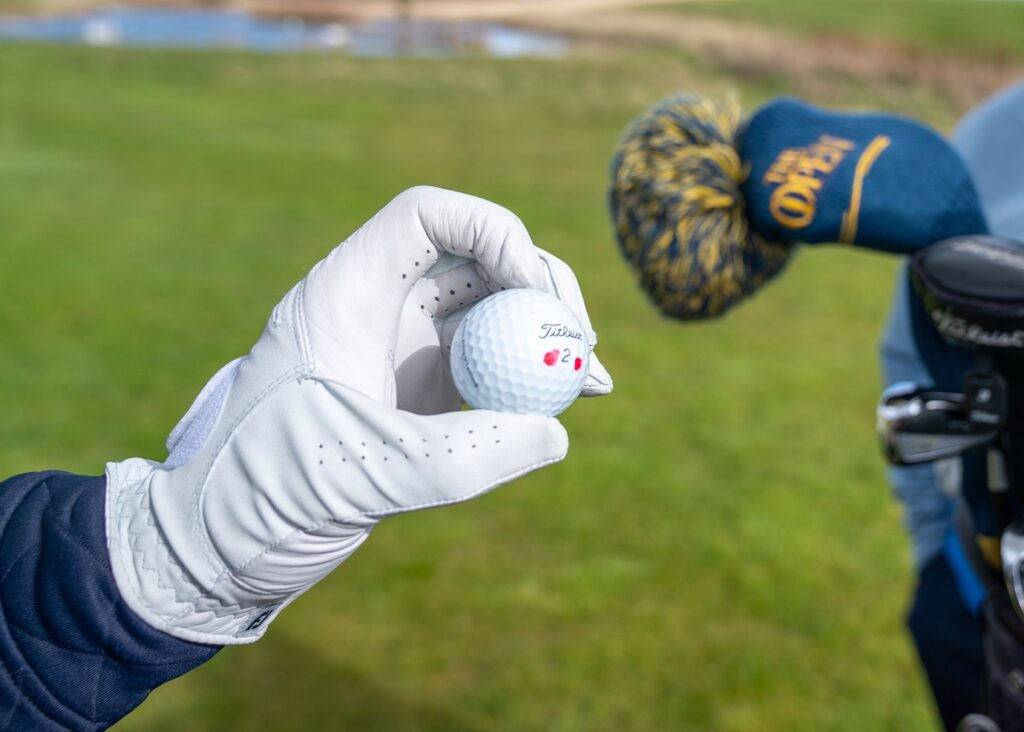
Although adding an identification mark clearly makes the process of identifying a ball easier, Rule 7.2 provides more detail on how this can be done if you haven’t marked your ball. If you find a ball which is the same brand, model, number and condition as yours in an area where you expect it to be, that is sufficient unless an identical ball is in the same area and there is no way of knowing which is which.
Even if you have put an identification mark on your ball, sometimes you’re going to find it so buried or barely visible that it may not be possible to immediately confirm that it is yours. In such circumstances, you are allowed to lift the ball to take a closer look under Rule 7.3, but before you rush in and just pick the ball up, there are some things you need to do to avoid incurring an unnecessary penalty when identifying your ball:
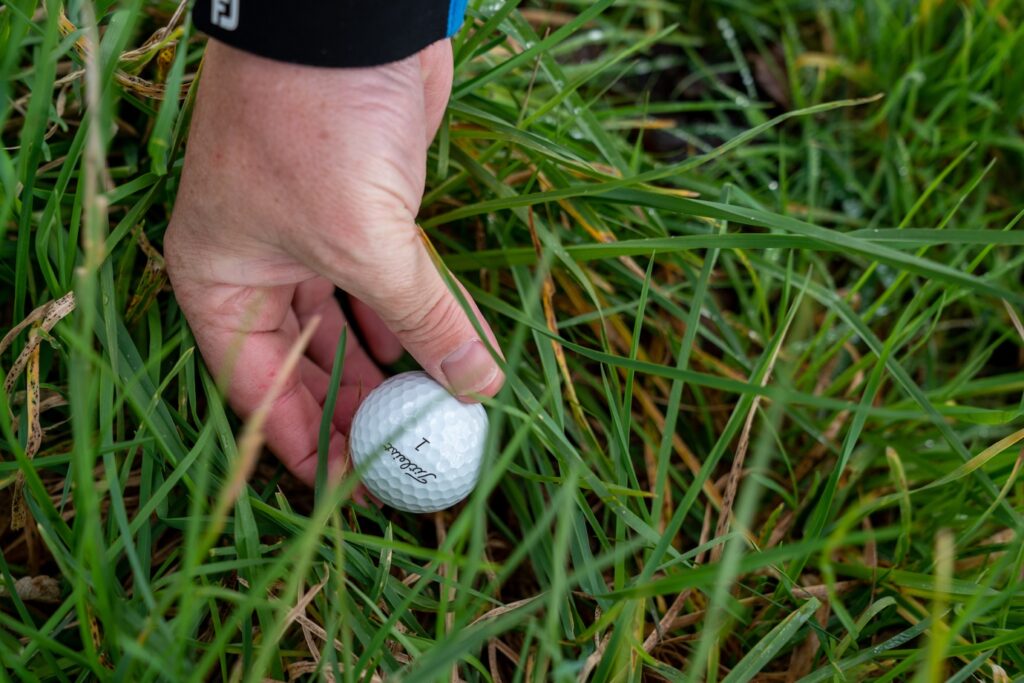
* You may only lift your ball to identify it when it is genuinely necessary to do so.
* Before lifting the ball, you must mark its position (using a tee or something similar).
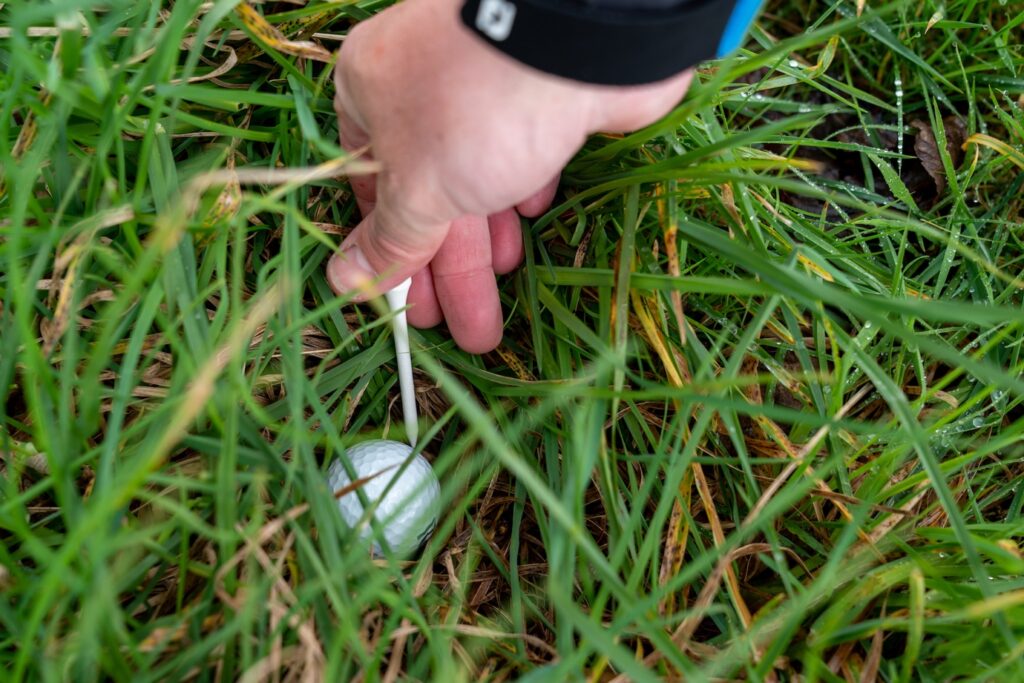
* If there is mud or dirt on the ball, you may only clean it to the extent required to identify it.
* Once identified, you must then return the ball back to its original position.
Failure to comply with any of these requirements results in a one-stroke penalty, and furthermore, if you fail to replace the ball in the correct spot, the penalty escalates to two strokes in stroke play or loss of hole in match play for playing from a wrong place.
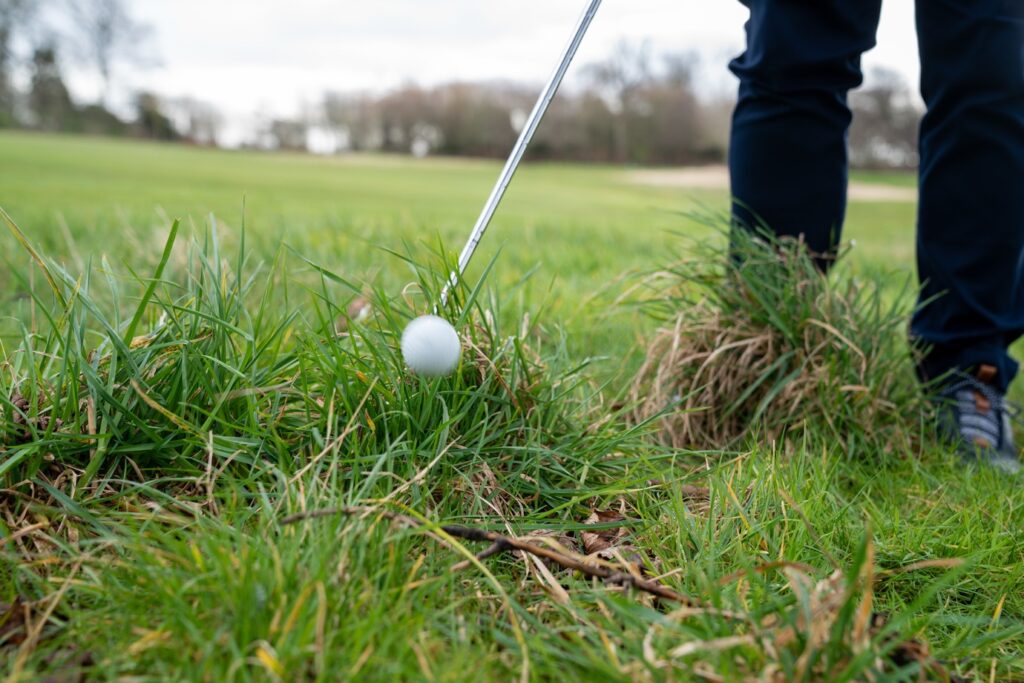
It’s also worth noting that while you are no longer penalised for accidental movement of your ball while searching for it, if you do move it, you must replace it in its original spot (estimating it to the best of your ability if you can’t be certain) to again avoid a penalty for then playing from a wrong place.
If you need to positively identify a ball lying in (or potentially covered by) sand, you may do so whether it’s a bunker or any other sand on the course. Rule 7.1b explains how to proceed.
February 2025
Is it legal to use the back of your putter to hit a shot?
A question to the Rules Guy at golf.com – I play right-handed. Recently, my ball stopped inches from a tree trunk. I considered turning my 4-iron upside down to hit the ball as a lefty but decided to play left-handed with the back of my putter. Allowed?
Here is the answer – Yes, it’s allowed — provided you didn’t push, scrape or scoop the ball with the head of whatever the club, per Rule 10.1a, lest you get the general penalty of two strokes in stroke play and loss of hole in match play.
A ball must be “fairly struck,” which thankfully isn’t the same as saying it must be well struck.
Without wishing to cast aspersions on your backhanded-putter skills, we hope you considered employing Rule 19.2 instead — sometimes penalty relief is the percentage play.
November 2024
Alright, grab your tees and tighten up your glove, a quick refresher to reference on how to keep your game sharp and your behavior even sharper when you’re playing in a club that’s social by name and nature, but also has some serious competitions on the line. We’re not just out here for a stroll in the park, this is competition golf.
Whether it’s our weekly stableford,par, stroke game, a point for the club championship, or one of the big majors, the way you conduct yourself on and off the course sets the tone. So let’s run through some do’s and don’ts to keep things cool, but with a level of respect and courtesy that reflects the competition we’re all here to play.
The Do’s:
- Do Follow the Rules (Not Just the Big Ones) Everyone knows the basics, right? Keep your ball in play, avoid bunkers when possible, and know the penalties for a lost ball or an out-of-bounds shot. But also, don’t let the little details slide. Things like:
- Proper course etiquette (repair divots, fix ball marks, rake bunkers, etc.)
- Play at a reasonable pace. If you’re taking forever to line up every putt, remember, there’s a full field of players behind you.
- Do Manage Emotions Golf is a mental game, and there’s no place for childish tantrums or throwing clubs. We’ve all had a bad hole:
- Stay composed. A few deep breaths and move on to the next shot. Remember, it’s not about how many times you fall, but how quickly you get back up.
- Do Know Your Handicap As Michael said, this is one of those things that can sneak up on you if you’re not paying attention. When you’re playing for points, and especially when it comes to the club championships or majors, your handicap is crucial for fairness:
- Know it, don’t guess or assume it’s still what it was six months ago. Check your official handicap before each round.
- Play within your limits. Don’t try to “golf your ball” like you’re a scratch golfer if you’re not one. Play your game and keep it realistic.
- Pace of Play I know, we’ve all been stuck behind slow players who seem to take forever to hit every shot. Don’t be that guy:
- Keep up with the group ahead of you. If you’re out of position, try to pick it up.
- Be ready to hit your shot when it’s your turn. You’re not on a Sunday stroll, so be efficient with your play.
- Don’t be that person holding up the group behind you because you’re fiddling with your clubs or standing over every shot like you’re teeing off at Augusta.
- Walk briskly from shot to shot, stay engaged, and keep the pace up. It’s part of that is managing time efficiently.
The Don’ts:
- Don’t Be the Guy Who ‘Misses’ a Rule The infamous “I didn’t know that was the rule” moment. It’s one thing if you’re new to the game, but if you’ve been around a while, there’s no excuse for missing basic rules:
- Don’t cheat!!! Simple as that. If you’re in a fair competition, don’t bend the rules to your advantage. If you’re unsure about a rule, ask! No one’s going to think less of you for being informed.
- Don’t distract your playing partners by questioning the rules in the middle of a round. If there’s a dispute, settle it after the round. Focus on your game during play.
- Don’t Get Overly Competitive in Casual Play Yes, there are points on the line, but don’t get so wrapped up in the outcome that you forget why you’re there in the first place: to have fun and enjoy the game.
- Don’t hit into another group, even if you’re feeling cocky about your drive. Wait your turn and respect the flow of play.
Final Thoughts:
Stuff to remember as you battle for points, club championships, and major wins(or bragging rights). Golf is a game of integrity, and in a competitive social club, your attitude and behavior off the course matter just as much as your scorecard at the end of the round. Keep it sharp, keep it respectful, and above all, play like you mean it! Because in the end, it’s not just about the points, the trophies, or the leaderboard positions, it’s about the game, the respect, and the camaraderie that comes with it.
Happy to discuss any of these points for clarification with individuals or the group as a whole.
Now, get out there and play some golf. Just don’t forget to have a bit of fun too, alright?
Cheers,
El Capitano.



